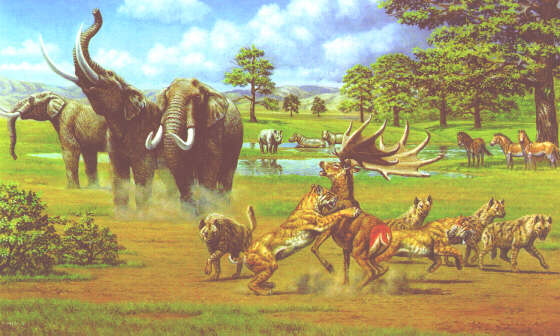 |
 |
 |
 |
 |
Produced
by the Population Genetics and Evolution class, Furman University |
||||
 |
 |
 |
 |
 |
Produced
by the Population Genetics and Evolution class, Furman University |
||||
 |
The
Neogene: Sahelanthropus tchadensis |
 |
||
| Sahelanthropus
tchadensis is a hominid species that was discovered in central Africa
in 2001 (Wikipedia 2010). The single skull dates to roughly 7my, older
than the human-chimpanzee divergence estimated at 6my by genetic analyses
(Wikipedia 2010). The species had a cranial cavity that is similar to
that of modern chimpanzees (McCarthy 2008). Much of what is known about
Sahelanthropus remains controversial. Their exact placement within
the hominid family is uncertain; their presence prior to the human-chimpanzee
divergence and their morphological similarity to chimpanzees in cranial
size and shape may mean they are more closely related to modern chimpanzees
and gorillas (Wolpoff et al. 2002, McCarthy 2008). Some argue that Sahelanthropus
may have been related to both humans and chimpanzees but was not necessarily
a direct ancestor of either (Wikipedia 2010). Whether or not they were
bipedal is another topic of contention for scientists. Some believe they
had a habitual upright posture, while others doubt its occurrence at all
due to the structure of its cranial base (Wolpoff et al. 2002). There
is no doubt that it is a Miocene hominid, realted to the human, chimp,
gorilla triad. How it fits into the pattern of diverge occurring among
these lineages at that time is debated. Page by Lin-Lin Zhao |
 |
| Sahelanthropus skull. Photo from: Wikipedia. | |
| McCarthy EM. 2008. Sahelanthropus tchadensis – the hominid that became an ape. www.macroevolution.net. Accessed on April 18, 2010. Wikipedia. 2010.
Sahelanthropus. Accessed April 14, 2010. |